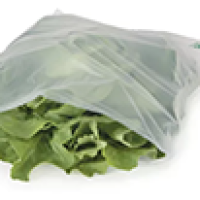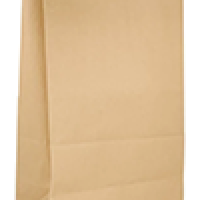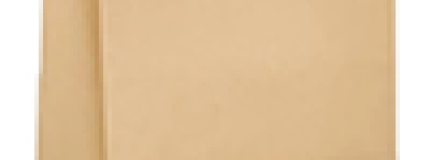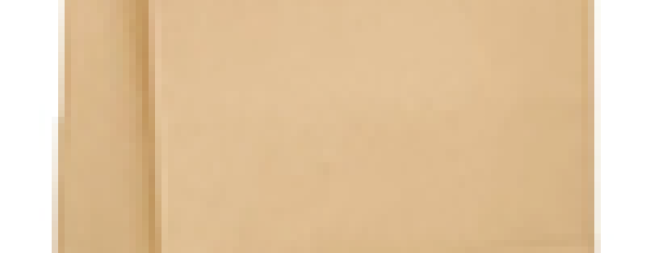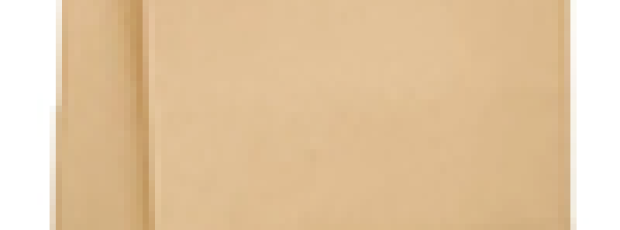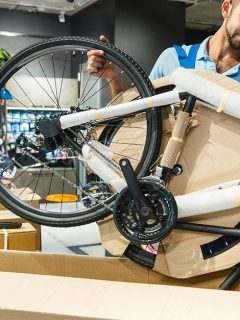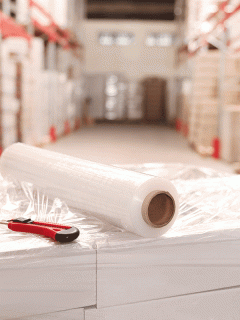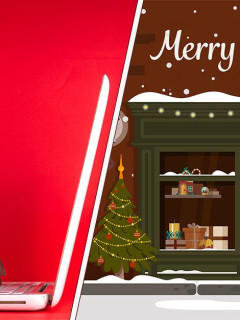We knew it: Packaging made of corrugated board is simply a hit! According to a study by the Bielefeld-based opinion research institute TNS Emnid (published by the Association of the Corrugated Board Industry ), corrugated board packaging clearly scores top marks in six of the twelve categories. A result that would make many a school report recipient turn green with envy at the end of the school year…
Packaging made of corrugated cardboard as a vehicle for sympathy
Experts from politics, industry and trade rated transport packaging made of various materials such as metal, plastic, solid board, paper, corrugated board, foam and wood. The results showed that packaging made of corrugated board not only offers the best price-performance ratio, the best handling and the most versatile application possibilities. No, the material also came out on top when it came to “soft” values such as likeability!
In fact, corrugated board is a thoroughly emotional material. This is partly due to the high “play value” of the material. Thanks to its extraordinary feel, corrugated board is excellent for handicrafts, even entire knight’s castles, robust houses and furniture made of corrugated board due to its high stability. Corrugated board is therefore stable and easy to work with – and thus leaves room for endless creativity!
Corrugated board at the point of sale and in online retailing
Dr. Oliver Wolfrum, Managing Director of the Association of the Corrugated Board Industry (VDW), explains, for example, that the shopping experience in retail is primarily shaped by the design of theme worlds. Secondary placements, displays and shelf trays made of corrugated board play an important role in this.
But the so-called “shopping experience” also exists in online shopping – according to Sabrina Mertens, the responsible division manager at the Cologne E-Commerce Center (ECC), it is condensed to the short period between receiving and unpacking the goods. But only just under a third of online retailers use the packaging for communication, according to ECC findings. Against this background, corrugated board expert Wolfrum finds the industry’s reluctance to design incomprehensible: “Mail order packaging has an outstanding role as a medium: it is the company’s business card and gives the recipient the first impression of his newly purchased product.”
Who “invented” corrugated board?
As is so often the case with groundbreaking inventions, it was chance that played a role here: in 1871, the American Albert L. Jones invented the original form of corrugated cardboard while searching for the perfect process to lay fabrics in waves, for example to create a decorative ruff on garments. However, it was not until 1882 that his compatriot Robert H. Thompson glued another flat layer of cardboard* to the corrugation on both sides. The Corrugated board and thus the “raw material” for the now extremely popular Folding carton made of corrugated board is therefore actually only a good 130 years old!
Corrugated board and its many applications
However, the diverse areas of application of what is actually a simple invention quickly made big waves: as an insulating and cushioning material, corrugated board is simply ingenious! In a kind of lightweight construction, the extremely light basic material paper is shaped into an extremely resilient and resistant insulating and cushioning material. The demand was immense from the very beginning in the age of industrialisation and the accompanying increase in the trade and transport of goods. In 2012, the production of corrugated board already accounted for 40% of the total production of the German paper industry.
Why is corrugated board so incredibly stable?
The second decisive factor lies in the quality of the bonding of the (at least) three layers of cardboard. The better the penetration of the paper with adhesive, the stronger the bond and the more stable the corrugated board. A sign of quality is therefore the tear test: the more fibre residues of the two separated layers remain, the better*.
A third distinguishing feature is also the number of corrugated layers processed: Common in the packaging sector are single-flute, double-flute and triple-flute corrugated board, with the individual flute layers each separated by a smooth layer. The triple wall corrugated board therefore consists of seven paper layers and is therefore also the most stable! 3-wall cardboard boxes can therefore carry several hundred kilos of payload.
The strength of corrugated board is also influenced by the choice of base paper during production. The proportion of waste paper plays a significant role in this. For example, the use of kraftliner paper, i.e. virgin fibres, leads to higher tear strength, better moisture resistance and thus increased stability of the corrugated board.
Also decisive for the damping effect is the ratio of the wave height (h) to the length (t) of a single wave (from valley to valley), the so-called wave division. According to this, waves are divided into different sizes: from A-wave (also called coarse wave) to the increasingly finer C- and B-waves to E-wave (called finest or microwave). The smaller the corrugation, the lower the stackability (resistance to static-mechanical loads) and buffering effect. The packaged goods themselves must therefore be able to withstand greater loads, i.e. they must also bear the pressure from outside. Small flutes can therefore be used for flat goods such as magazines or books, large flutes are advisable for sensitive goods. However, the smaller the flute, the better the printability.
- Semi-chemical pulp: Here, fresh fibres (from hardwoods or softwoods) are obtained by a chemical pulping process. The fibres are stable and long.
- Corrugated pulp: Corrugated pulp is obtained from 100% mixed waste paper. The fibres are short and not as stable as those of the half pulp.
- Kraft liner (best quality): Consists of at least 80% virgin fibre material. This gives the corrugated board a high resistance to external influences. (Kraftliner is mainly used as an outer liner).
- Testliner (medium quality): Testliner uses 100% better quality waste paper. It consists of two or more layers: a thicker backing layer of mixed waste paper and a top layer of corrugated board waste. (Testliner is used as an inner and outer liner).
- Schrenz (poor quality): Schrenz is a lightweight blanket paper made from mixed low-grade waste paper. (Schrenz is often used as an intermediate web for multiwall corrugated board)
Originally, the word cardboard comes from the French: "carton" means cardboard box. However, the term has its origins in Italian. Thus "cartone" is used as an enlargement of "carta" (paper). This already gives an indication of the difference between paper, carton and cardboard: with a weight per unit area of 130g/m² to 600g/m², carton lies between the lighter paper (7 to 150 g/m²) and the heavier cardboard (from 600 g/m²). On the one hand, this makes the material particularly strong, but at the same time it remains flexible and easy to shape.
High-quality cardboard consists of a mixture of cellulose, groundwood pulp and waste paper in variable proportions and usually has at least three layers. Pulp, broken down into its fibres, is ground into an aqueous pulp in a first step. Waste paper is also ground after it has been cleaned. After further processing steps, such as chemical deinking - a process used to remove colour - it is mixed with water and additives to form an aqueous solution as a recycled material and blended with the pulp.
This mass goes onto a sieve-like endless conveyor belt in the board machine. There, the fibres contained align themselves with the running direction of the sieve and, over time, the first paper webs are produced that are calendered. Coughed...- what? Don't worry if this term doesn't mean anything to you at first. Couching originally means the first dewatering step in the production of paper. In our case, the technical term means that the paper webs are pressed wet onto each other without the use of glue, which creates the individual cardboard layers.
In the board machine, the endless web then passes through various rolling and drying cylinders, the calenders. When completely dried, the raw material is given the so-called "coating": the white liquid contains mostly lime, fillers and binders and improves the printability. The "coated" uncoated board then goes through another rolling and drying phase. Depending on the requirements, the "line" side is given an additional smoothing by a chrome-plated calender. In the final step, the continuous board web is cut into individual sheets and palletised - and is ready for different uses.
Production of corrugated board
A corrugated board is produced in a corrugator. First, the corrugated sheet is produced with the help of corrugating rolls and under the influence of pressure and heat. In the second step, the outer cover is glued on using glue. A second cover sheet is glued onto the single-sided corrugated board.
- easy to process
- low weight
- low material consumption
- good strength properties
- optimum protection against mechanical stress due to buffer effect
- good air permeability
- binds moisture (hygroscopic)
- can be customised through printability
- recyclable
Corrugated board – the different types
Depending on the number of corrugated webs, corrugated board is divided into single-flute, double-flute or triple-flute corrugated board. In the case of multiwall corrugated board, at least two corrugated paper webs (one with an inner liner and one with an outer liner) are joined together with an intermediate layer. The different flute types differ in flute height and flute pitch. In the case of multi-flute corrugated board, these can be combined, e.g. a B-flute and a C-flute.
The classification of corrugated board
Corrugated board is classified according to DIN 55468. Depending on the type of corrugated board (not finished boxes!), certain strength values must be met.
The strength of a corrugated board is determined by the following three properties: Bursting strength, puncture work and edge crush resistance.
- Burstingstrength is the resistance that a corrugated board offers to a unilaterally increasing pressure (measured in kilo-Pascal (kPa)).
- Penetration work is the force required to penetrate a corrugated board with a penetrator (measured in joules (J)).
- Edge crush resistance is the force required to compress a corrugated board sample standing on its edge (measured in kilo-Newtons/meter (kN/m)). These properties according to DIN apply under optimal conditions: 23°C and 50% humidity. At 70% humidity the values decrease by 1/3, from 90% by 2/3.











